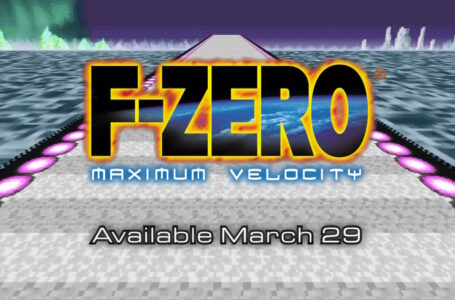Pokémon Let’s Go, Eevee! Review (Switch)
As I said before in my rundown of my ten favourite Kanto Pokémon, I’ve been with the series since the very beginning. As such, Pokémon Let’s Go, Eevee! is not my first time running amok through Kanto, but I simply wasn’t going to resist another jaunt with an adorable little Eevee in tow much like the Pikachu I had back in Pokémon Yellow Version.
The story of Pokémon Let’s Go! hits pretty much all of the same story beats that you might remember from your last time in this region; far too young child gets essentially kicks out of their home, given one of two priceless valuable devices that exist in the world and a creature of untold power, being expected to journey across the region taming other ferocious beasts. Just a pretty standard childhood then.
Mixed with the additional plot of said impossibly brave child taking on a villainous organisation hell bent on world domination (Kanto’s particular group being Team Rocket), and every part you might remember is here. The only difference being your friend and rival not being Gary (or whatever hilarious name you might have given him), but a new character that you can also name whatever you please.
This new guys lacks the abrasive attitude of Professor Oak’s grandson, coming across as an insufferable do-gooder most of the time, giving you medicines and helpful advice. However, you do meet the original rival throughout the story (called Blue, for wonderful nostalgia based reasons, I assume), who fulfils more of a mentor role throughout the game, so all’s right with the world.
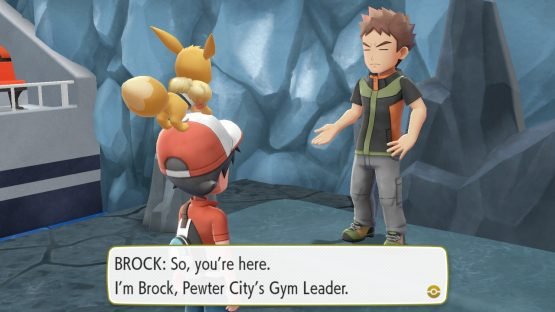
Pokémon Let’s Go! departs from the gameplay of the originals quite heavily, however, opting to alter certain mechanics to bring it closer to that of the phenomenally popular Pokémon GO! App. The majority of the game has you running around the game catching and battling with your party of adorable creatures. Battles in this title only occur against trainers and gym leaders, and will play out in much the same way they always have.
You and your opponent take turns in choosing moves to attempt to take out each other’s critters with the winner being the one that has Pokémon left. Unlike the original journey, all of the modern attributes have been added from the dynamic aesthetic of the battles to the types and movelists. In fact, every Pokémon now has their move list as of Gen VII so because of this some battles can be tougher than they were owing to unexpected moves, if you haven’t played since the 90s.
Returning are the eight Gyms that we all know so well by now and the Elite Four nestled and waiting for you at the end of Victory Road. Also, the puzzles to get to the Gym Leaders make a return, looking and feeling far better than before. The only problem, in fact, with the battles in Let’s Go! is that the amount of experience you gain from them is actually low in comparison to simply spending a short while catching Pokémon instead.
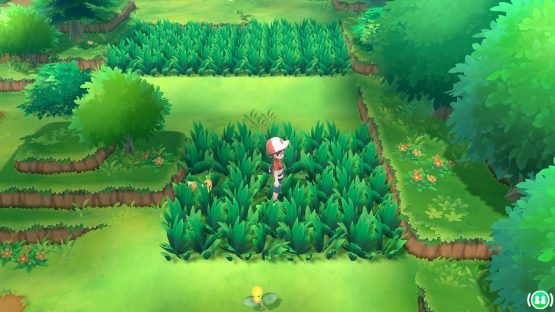
Luckily, catching the creatures is a far simpler affair that will be all too familiar to Pokémon GO! players, with the Pokémon appearing before the player and you essentially launching balls and berries at it until it either stays in the ball, or runs away. How the balls are thrown depends on your play method, but the key is to aim for the continually closing ring on the Pokémon, with successful throws being those with a smaller ring.
Also, the colour of the ring will determine as to how easy the Pokémon will be to catch with green being the easiest and red the most difficult. This can be changed by either plying the hapless thing with berries or by using better Pokéballs in your attempt to capture it. Although better throws and better balls are no guarantee of success at all, so cue a similar frustration to being able to catch things as before.
A key difference in the standard catching formula is the Catch Combo system, which will grant bonuses dependent on how many of a particular Pokémon you catch in a row. This will mean that successful catching of the same critter in a row will increase your chances of finding a shiny in that species, and also give the chance of finding one with a better stat distribution.
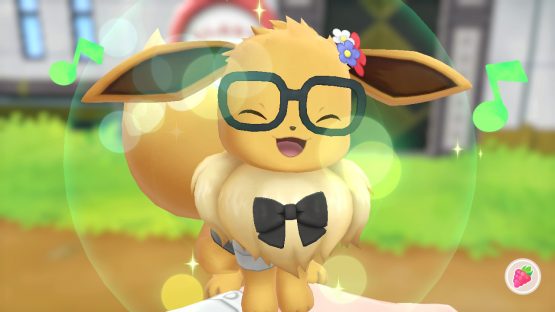
Finally, a few quality of life gameplay enhancements have been made to the basic formula, of which some were introduced in the latter games in the series. One of these is the fantastic continuation of HMs not existing and being replaced with “Secret Techniques” for Eevee or Pikachu, removing the need for a HM sponge Pokémon, as well as the ability to care for your buddy for additional benefits in battle (or have any Pokémon following you too). As a completely fresh idea as well, the Pokémon Box is now carried with you, allowing for Pokémon switching wherever you are.
Needless to say, there’s a lot more to the game, with some interesting fresher ideas coming into play from the latter towards the end of the main game that I’m not going to spoil; so even staunch veterans of Kanto will find something different here to play around with. As such, this feels like the definitive version of Pokémon Yellow Version that this was billing itself to be. There’s only one small problem with the gameplay – the controls.
Personally, I played this game with the Pokéball Plus and found it to be by far the optimum way to play for most circumstances. This only falls apart when trying to catch Pokémon in which the game decides to just fling balls anywhere and everywhere at the slightest movement, which is does a fair bit. The main option of a single Joy-Con just feels a little odd to use with the button layout and there’s an odd delay with the analog sticks too.
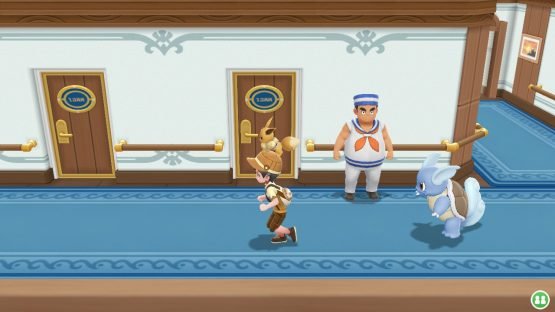
Handheld Mode is better for catching the critters, as it uses the gyroscopic sensor to move the aiming reticule, which is so much more precise. However, it still suffers from the odd delay mentioned above, so movement around the world itself still feels a little clumsy. It cannot be ignored how poor these various control methods are from an accessibility perspective, as a lot of people cannot use motion controls; so an ability to switch to buttons would have been a great addition and an opportunity wasted.
Speaking of wasted opportunities, I can’t bring discussion of the gameplay to a close without mentioning the drop-in co-op mode. A second player can drop in to your game with their own Joy-Con and wander around the world with you. However, the only benefits of this are found on catching and battling, during which the second player can assist. Rather than feeling like a beneficial set-up this instead feels hollow and trivialises a lot of the encounters.
This game is mostly positive for me from an aesthetic perspective. I love the visuals in the latter Pokémon games, with the worlds now brimming with colour and life, and so I’m adoring actually seeing Kanto in the scale it felt when I first played Pokémon Blue. I would have liked it to be more of a visual step-up from the 3DS titles than it is, but it’s undeniable that every aspect of the game looks superbly polished.
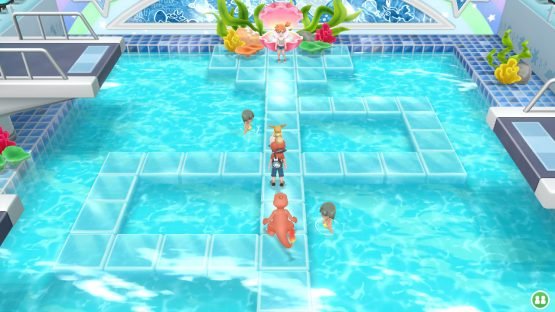
Every location and scenario still looks distinct, and this is only boosted by the incredible soundtrack. The entire array of songs you remember are back, but entirely and gorgeously remastered, so the the entire package sounds amazing. To use only a couple of examples, Lavender Town is just as sombre and unnerving, and the Trainer Battle music is more hype-inducing than ever.
I’ve been through Kanto so many times that it is almost verging on the point of the absurd. However, I can never resist going back, whether it be through nostalgia or curiosity, and this title gives a healthy dose of both in one single experience. The streamlined gameplay in the catching and exploring, combined with the latter Pokémon franchise aesthetic makes for a fantastic overall package.
In fact, I would go as far as to say that I would be thoroughly disappointed if the next mainline game in the series goes back to random battles. This one single change has made the whole experience far more enjoyable, with previously frustrating experiences such as Mt. Moon and Victory Road feeling far smoother and less staggered than before. Couple this with catching being a far quicker, immersive, and (mostly) less frustrating experience and the whole game feels fresher than anything seen in the series in years.
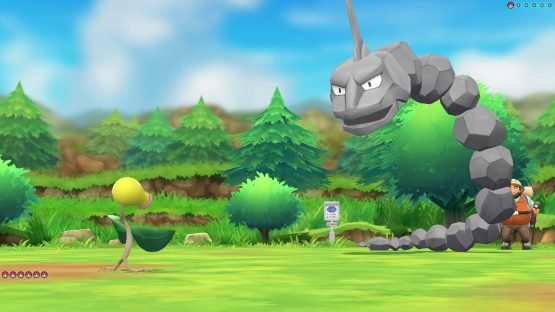
Pokémon Let’s Go, Eevee! and Pokémon Let’s Go, Pikachu! are out now for Nintendo Switch. Did you pick this game up on release? Did you go with Eevee or Pikachu? Is this your first time in Kanto, if so how are you finding it? Let us know in the comments, or on Twitter, and check back for more coverage of Nintendo games and other Japanese titles.
- New Persona 5 Royal Trailer Introduces Kasumi And Special Edition Revealed - June 6, 2019
- New Bloodstained: Ritual of the Night Character Revealed Ahead Of Release - May 31, 2019
- Final Fantasy XIV: Shadowbringers Preview - May 29, 2019




